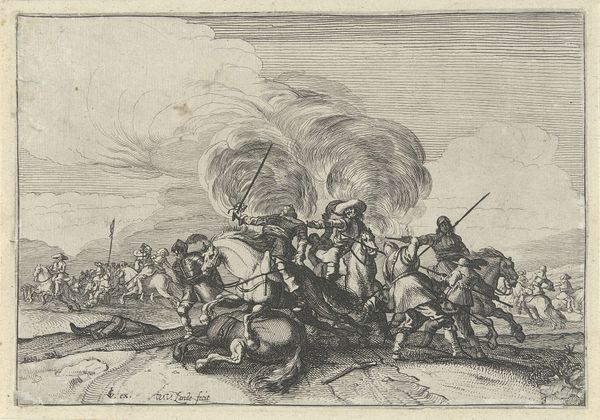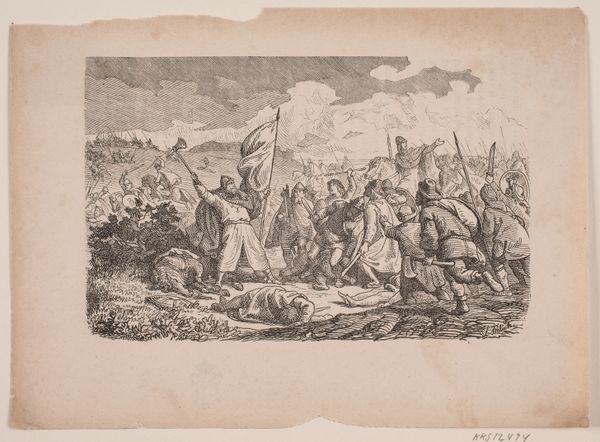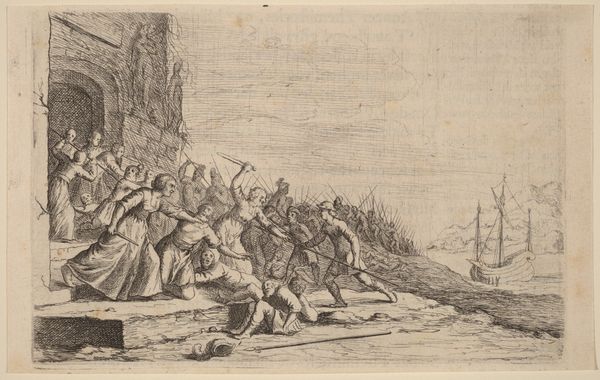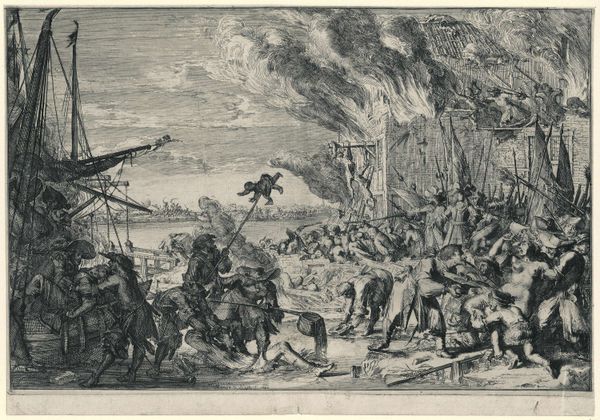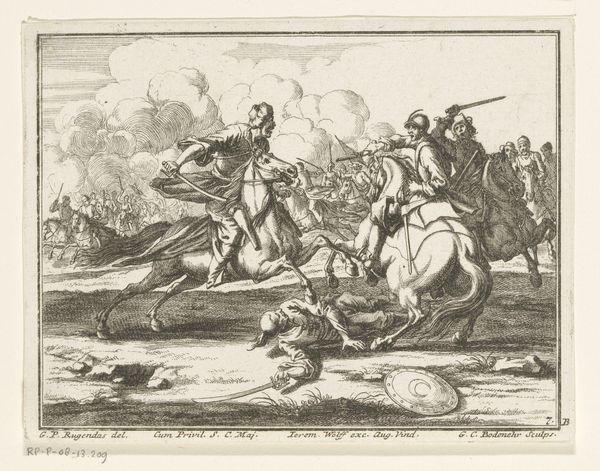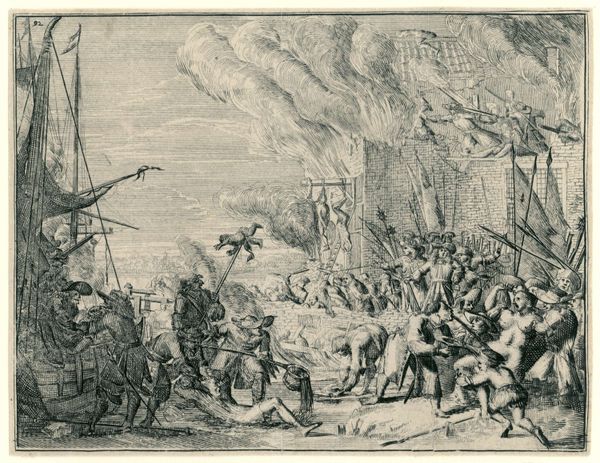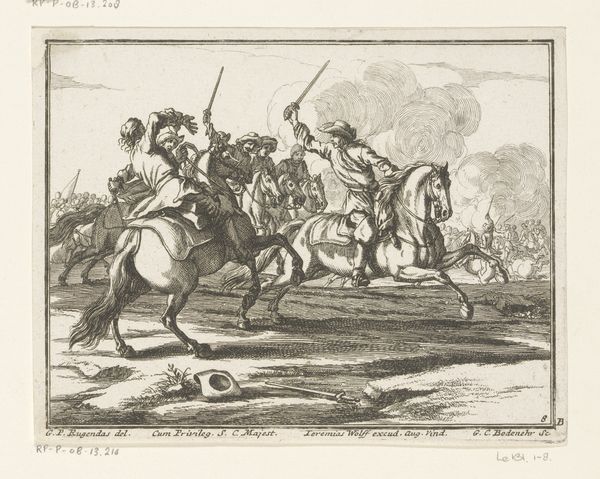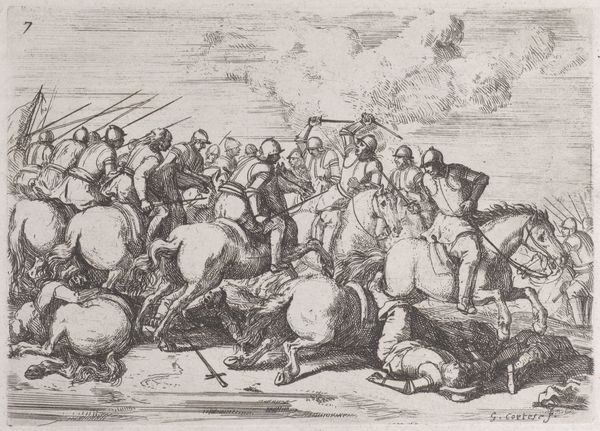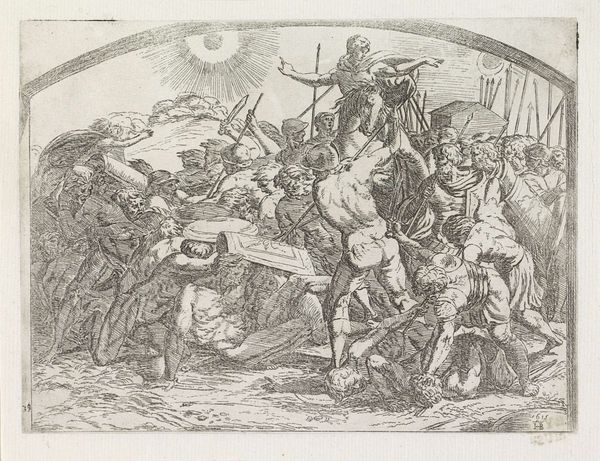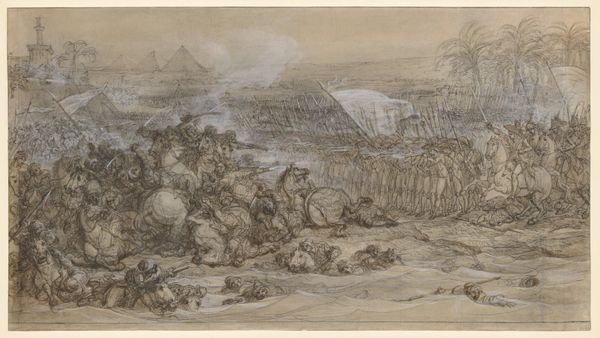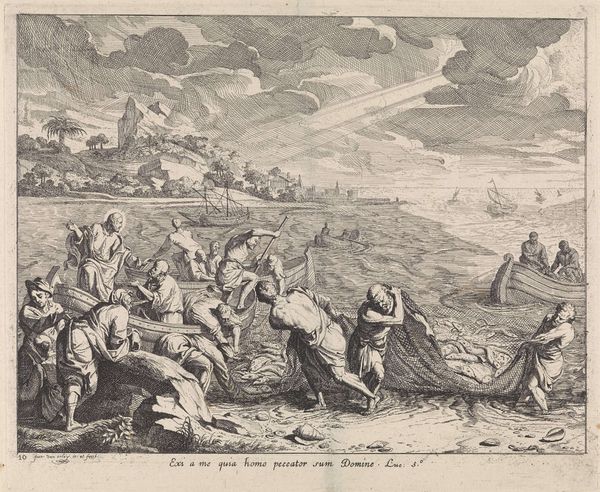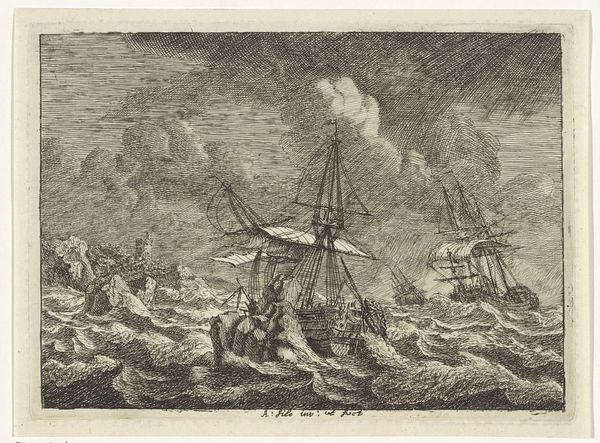
print, ink, engraving
#
ink drawing
#
narrative-art
#
baroque
# print
#
figuration
#
ink
#
genre-painting
#
history-painting
#
engraving
Copyright: National Gallery of Art: CC0 1.0
This print was made in the 17th century by Johann Wilhelm Baur, using a technique called etching. Think of etching as a kind of controlled corrosion. Baur would have coated a metal plate with a waxy, acid-resistant ground. Then, using a sharp needle, he scratched away lines, exposing the metal. When the plate was submerged in acid, these lines were bitten into the surface. The longer the plate sat in the acid, the deeper the lines, and thus the darker they would appear when printed. Once the etching was complete, the plate would have been inked, wiped clean, and then pressed against a sheet of paper. The ink held in the etched lines would transfer, creating the image you see. Note how the quality of line varies—some are delicate and pale, others thick and emphatic. This range reflects the skill of the etcher in controlling the acid bite. This process, though indirect, allowed for a relatively quick reproduction. Prints like these were an essential means of circulating imagery in early modern Europe, allowing for a wide distribution of visual ideas that could reinforce social, cultural and political issues.
Comments
No comments
Be the first to comment and join the conversation on the ultimate creative platform.
